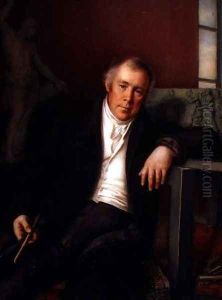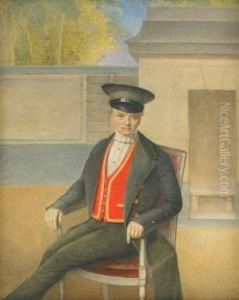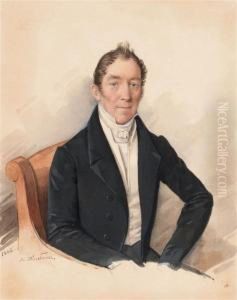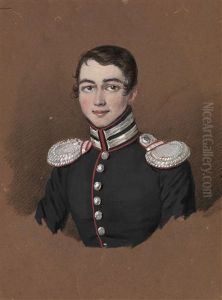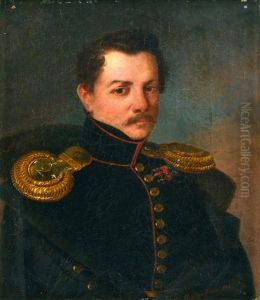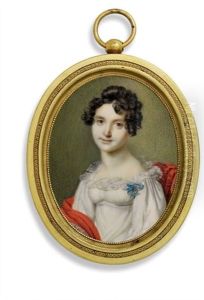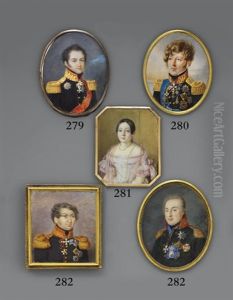Mikhail Ivanovich Terebenev Paintings
Mikhail Ivanovich Terebenev was a prominent Russian sculptor of the 19th century, born in 1795 in St. Petersburg, Russia. He was a part of the rich cultural milieu of his time and was known for his classical style of sculpture. Terebenev came from a family with artistic connections; his father, Ivan Terebenev, was also a sculptor, which had a significant influence on his early education and career choice.
Terebenev's initial education in the arts began under the tutelage of his father. He later attended the Imperial Academy of Arts in St. Petersburg, where he studied from 1809 to 1818. During his time at the Academy, Terebenev was recognized for his talent and was awarded a gold medal for his achievements, which afforded him the opportunity to travel abroad for further study—a common practice for young artists of the period who were seen as having exceptional promise.
He spent considerable time in Rome, which was a center for artists to study classical sculpture and the works of the Renaissance masters. Terebenev was particularly influenced by the Neoclassical aesthetic, which was prevalent at the time. His works often reflected the elegance and simplicity of this style, characterized by its focus on harmony, clarity, and strong lines that echoed the arts of ancient Greece and Rome.
After his studies in Rome, Terebenev returned to Russia, where he became an academician in 1829 and later a professor at the Imperial Academy of Arts. Throughout his career, he produced a number of notable sculptures, including public monuments and portrait busts. He was part of a generation of artists who contributed to the cultural landscape of Russia during a period of significant transformation and westernization under the rule of Tsar Alexander I and his successors.
Terebenev's work was not limited to sculptures; he also engaged in teaching and played a role in the development of the next generation of Russian artists. His influence was felt both through his own artistic contributions and through his mentorship at the Academy.
Mikhail Ivanovich Terebenev died in 1864, leaving behind a legacy of classical Russian sculpture that continued to influence artists well into the late 19th and early 20th centuries. His works remain a testament to the skill and refinement of Russian Neoclassicism and contribute to the rich tapestry of Russia's artistic heritage.
